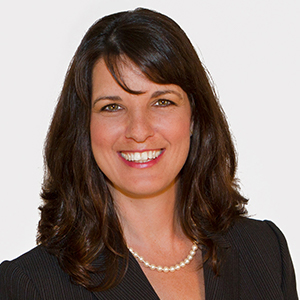Nonprofit organizations conduct prospect research to identify new donors or find hidden gems within their own database through the use of prospect research software. Prospect research tools can identify donors and prospects who have a special affinity for your mission, a propensity to make philanthropic gifts, and the capacity to make a major gift. While prospect research tools access and analyze large volumes of data to identify people who might be a good match for your organization, fundraisers must still employ a solid strategy to make the best use of this data.
Here are best practices to get the most benefit from your research and transform it into actionable fundraising steps.
Don’t stop at the data – have conversations too.
Many fundraisers make the common mistake of only analyzing data pulled from research tools. This type of research, which is typically organized on a spreadsheet, is a form of “quantitative research.” Although this information is valuable, it is simply a representation of a much larger picture. Quantitative research deals with numbers and statistics, while “qualitative research” deals with words and experiences. Both are important in qualifying a prospective donor. The data pulled from a donor research tool can identify a prospect who has an interest in your cause, the wealth to make large gifts, and even whether they have given large donations to similar nonprofits before. However, there is more that must be learned about a person through conversation before that prospect is truly qualified.
Although some donors may appear similar on the surface, every person has a unique perspective because of life experiences. Identical twins provide a powerful example of this. These two people usually have the same parents, birthday, ethnicity, height, weight, eye color, hair color. However, “Twin A” volunteers at his local food bank twice a year, while “Twin B” just started volunteering every Thursday with Special Olympics. “Twin A” gets $10 deducted automatically from his paycheck for Legal Aid, whereas “Twin B” prefers to make larger gifts with advice from a financial advisor.
All these unique characteristics could be uncovered in a 20-minute conversation with each twin. A prospect research report may show the donation history of the twins but just as important is the “why.” The qualitative research you conduct through conversation might lead you to understand why a sizeable donation to your organization would be very meaningful to one of them. Further, a 2021 study by Blackbaud indicated that donors who are regularly in contact with a nonprofit are significantly more likely to donate more frequently and in more significant amounts than donors who are not in communication with the nonprofit.
A qualitative study can help you adjust your fundraising plan. Usually, nonprofits will enter campaigns with preconceived ideas about how their donors will react to the project or fundraising goal. When a small group of donors participates in a qualitative study–providing feedback on the project before it is undertaken–it gives insight into how an entire population will react to the campaign. This insight can help your nonprofit create the best fundraising strategy, create the most compelling collateral or case for support, and help you reach your goals faster.
Affinity is usually more important than capacity
Donor research tools often use the word “affinity” to represent a donor’s connection to the nonprofit’s cause and “capacity” to describe the amount of money that donor can afford to give to a nonprofit. Many fundraisers new to prospect research make the mistake of focusing more on the capacity to give (wealth) than the prospects’ affinity to give.
Instead, affinity to give is generally rated by seasoned nonprofit professionals as the most essential factor in deciding which specific donors to target in a campaign. The inclination for a donor to give to a specific cause stems from their natural attraction to and interest in that cause. In other words, even if a prospective donor has millions of dollars, there is a slim chance that she will become a major donor to a nonprofit if she has little connection to the mission.
The goal is to locate the donors who will support the cause of your nonprofit naturally because their own values, beliefs, and intrinsic preferences align with your organization’s mission. Ideally, you want to connect with donors who have a natural affinity for your cause and cultivate a relationship with them based on your unique mission and vision. Try to engage them to the degree that they connect to your nonprofit’s mission so deeply that their desire to make a difference keeps them up at night thinking about how they can have even more impact.
Six factors to consider when identifying donors with a strong affinity include:
- Past charitable giving to your organization
- Expressed interest in your cause
- Past charitable giving to similar causes
- Personal relationships with your organization’s people
- Board service with nonprofits with a similar mission
- Activity on social media pages
Clean your data
Cleaning your data is an essential step in prospect research. Not only is it a wise practice for fundraising in general, but it will also save you money and time during the donor screening process. Most prospect research tools charge the nonprofit for “screens”. For example, if you want to screen 500 people in your database, you will have to purchase a package to screen at least 500 people through a prospect research tool. If you do not ensure that this data is clean, you will pay for more screens than you need. For example, if you do not remove duplicates, this will not only affect the research, but your organization will also end up paying for unnecessary screens. When cleaning your data, essential areas to pay attention to are duplicates and couples who share assets under the law. Most screening tools allow you to include a spouse’s name and maiden name, so there is no need to waste an additional screen for a spouse.
Failing to clean your data will also have an impact on the total anticipated capacity of your list of donors. For example, if a donor’s ability is counted more than once because you forgot to remove a duplicate or did not combine a couple with shared assets, the total anticipated giving capacity of your donor base may be overestimated. This may not have a detrimental effect if the dollar values are small, but sometimes the data can be skewed by millions of dollars. To ensure your nonprofit’s leaders are making decisions about prospects and campaign strategy using accurate data, it is critical that you carefully clean your data prior to screening.
Look for the hidden gems within your own donor list
As mentioned above, affinity is the most essential factor to consider when qualifying prospective donors for a fundraising campaign. Existing donors have already demonstrated their affinity for your cause by making a gift in the past. Generally speaking, a satisfied donor is more apt to donate to your organization again than someone who has never given before. Therefore, it is critical for you to identify donors who already gave to your nonprofit, were thanked, and felt personally rewarded as a result of making their donations. A helpful first step is to run your current clean donor list through a screening tool. When analyzing the results, look for donors who have given in the past but who have a significantly greater capacity to give. Pay attention to the frequency of their donations and how recently they were made. The more frequent and recent, the more likely they can be cultivated for solicitation of a larger gift. Informed with this insight, you can then decide how to cultivate this prospect to consider a larger gift that would be meaningful to this donor.
Once you have qualified your existing donors as major gift prospects for a fundraising campaign, then you can turn your attention to conducting research on prospective donors who have not yet made a gift to your organization. Thus, prospecting should begin within your organization’s existing donor list, followed by a search outside of your organization. Remember, hidden gems are satisfied donors. Your organization should be thanking your donors and following up with them, demonstrating the ways in which their donations made an impact and learning as much as you can about how their connection with your organization improves their own quality of life.
Validate the results
Validating the results of a screening tool is a crucial step of the prospect research process. Unfortunately, many of the wealth screening engines have out-of-date contact information for donors. Therefore, it is essential to validate contact information with a public records source. There are a variety of free engines that can be utilized by your nonprofit to perform this task. One free, helpful search engine is https://www.truepeoplesearch.com. This free public records search will provide contact information to ensure that Board members and staff are not wasting their time by utilizing incorrect contact information to connect with prospective donors.
Further, sometimes the capacity rating of donors is skewed. If someone within the database has a common name, the database may suggest their capacity is higher than it actually is. This is why the use of middle names and addresses is important in identifying the correct person. You can validate the people that the research software has marked as your best prospects by checking their addresses, spouse, and other information that insiders in your organization know. Those same insiders in your organization—staff, Board members, and committee members—may also have validating or disqualifying information they know firsthand. By validating the screening results, your nonprofit will save time and resources in the long run.
Prospect research unlocks a wealth of information that can move your fundraising program forward by leaps and bounds.






